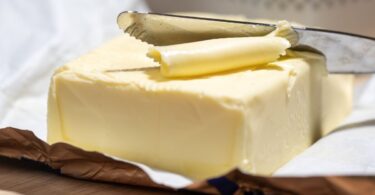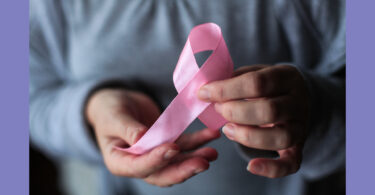Abstract: A case of Lumbar spondylosis was treated with a single remedy, Lachesis trigonocephalus, on the basis of striking mental symptoms, with consideration of underlying physical symptoms. The case was evaluated on the basis of the visual analogue score, Oswestry disability questionnaire, which established an evidence based result.
Keywords: Lumbar Spondylosis, osteophytes, visual analogue score, Oswestry disability questionnaire.
Introduction: Lumbar spondylosis is an age related degenerative disc disease of the lumbar spine. The disc ages owing to deterioration of the proteoglycan within the disc which becomes dehydrated as a result. Secondary changes also occur in the facet joints with loss of joint space, sclerosis and osteophytes formation.1
The rate with which lumbar spondylosis occurs is partly related to genetic predisposition as well as injury history. Other causes may be past injury to the spine, severe arthritis or past spinal surgery.2
Spondylosis of the lumbar spine is considered mechanistically as the hypertrophic response of adjacent vertebral bone to disc degeneration. Finally, spondylosis may be applied nonspecifically to any and all degenerative conditions affecting the disc, vertebral bodies or associated joint of lumbar spine. For purposes of this review, we will use this final, broad definition of spondylosis, recognizing the incidence of coincident degenerative changes, and dynamic interplay between adjacent disks, vertebrae and nerves that create the clinical pain syndromes within the axial spine and associated nerves.3
It presents as back pain and it can be localised to the lumbar spine or may radiate into the legs below the knee. Osteoarthritis results from narrowing of the intervertebral disc located between the vertebrae of the spine. The adjacent vertebrae grow spinal joint spurs in response to the increasing pressure placed on them. The bony growth can cause localised pain in the low back or leg pain related to nerve impingement. Radiographic tests such as X RAY , MRI and CT SCAN are used for diagnosis.4
WHO recommended outcome measures for low back pain are appropriate history and physical examination, modified Schober test of spinal mobility, measurement of pain on visual analogue scale(VAS) , Oswestry disability questionnaire(ODI) , modified Zung questionnaire and modified somatic perception questionnaire.5
Case Study
A male patient, VM, age 55years, complained of pain and numbness in right lower limb which was extending to the ankle since one year which is worse walking and after waking up from sleep. He also complained of having burning in right upper abdomen and acidity along with chronic constipation with hard stools. Patient feels better while loosening his clothes and drinking cold water. Patient is Hot (2+) with right sided complaints; desire: spicy.
Mentally he is very irritable and talkative. On asking about his complaints the patient indulges deep in his history and starts saying irrelevant things not required in the case and even not related to what he was asked about. In spite of being a Brahman he does not believe in God; he thinks that it has no identity and is merely a human creation.
On the basis of X RAY and MRI reports he was diagnosed as a case of Lumbar Spondylosis.
PRESCRIPTION: Lachesis 200/ 1dose
RESULT: Follow up was aimed at 30 days and on each visit scoring of the clinical symptoms was done on the basis of ODI and VAS. After every follow up ODI and VAS score decreased with general improvement of symptoms from % disability 56% to 38%, 26%, 22%. After 3 months he presented with appearance of a few similar symptoms in lesser intensity and with general improvement of the patient, as well as the score, for which the same medicine was repeated in 200 potency. After this he showed marked improvement in symptoms as well as the score from 22% to 10% disability and VAS score from 9 to 2 in 5 months.
ODI SCORING
| FOLLOW UP | 20/2/16 | 23/3/16 | 25/4/16 | 23/5/16 | 27/6/16 | 25/7/16 |
| PAIN INTENSITY | 4 | 2 | 2 | 1 | 0 | 0 |
| PERSONAL CARE | 3 | 2 | 1 | 1 | 0 | 0 |
| LIFTING | 3 | 2 | 1 | 1 | 1 | 0 |
| WALKING | 3 | 2 | 2 | 2 | 1 | 1 |
| SITTING | 4 | 3 | 2 | 2 | 1 | 1 |
| STANDING | 4 | 3 | 3 | 2 | 2 | 2 |
| SLEEPING | 1 | 1 | 0 | 0 | 0 | 0 |
| SEX LIFE | 1 | 1 | 0 | 0 | 0 | 0 |
| SOCIAL LIFE | 2 | 1 | 1 | 1 | 0 | 0 |
| TRAVELLING | 3 | 2 | 1 | 1 | 1 | 1 |
| TOTAL POINTS | 28 | 19 | 11 | 11 | 6 | 5 |
| ODI SCORING | 56% | 38% | 22% | 22% | 12% | 10% |
VISUAL ANALOGUE SCORE
| DATE OF FOLLOW UP | VAS SCORE |
| 20/2/16 | 9 |
| 23/3/16 | 6 |
| 25/4/16 | 5 |
| 23/5/16 | 5 |
| 27/6/16 | 3 |
| 25/7/16 | 2 |
CONCLUSION: This study revealed that homoeopathy was quite efficacious in this case of Lumbar Spondylosis where the patient showed marked improvement. ODI score at the time of presentation was 56% (severely disabled) and after treatment 10% (minimal disability) and VAS from 9 to 2. Patient was improved both on mental and physical plane.
REFERENCE:
- Russell C R,Williams N S,Bulstrode C J.Bailey and love’s short practice of surgery, 23rd edition:London:hodder headline group;2000
- emedicine.medscape.com
- ncbi.nlm.nih.gov/pmc/articles/PMC2697338
- http://www.rheumatology.org/I-Am-A/Patient-Caregiver/Diseases-Conditions/Living-Well-with-Rheumatic-Diseases/Back-Pain
- who.int>volumes>Ehrlich
- Repertory of the homoeopathic materia medica by J.T.Kent; enriched Indian edition reprinted from 6th American edition edited and revised by Clara Louise Kent, MD; B.Jain Publication, New Delhi.






